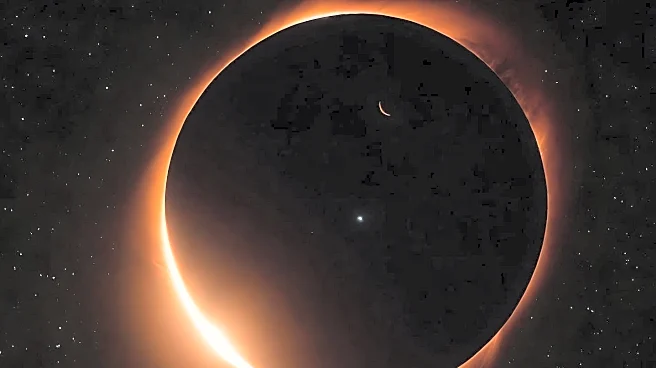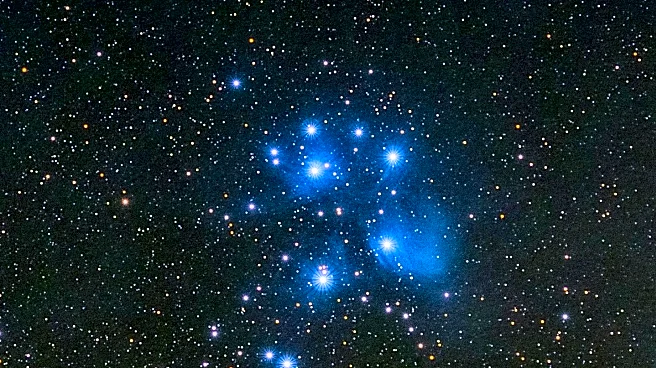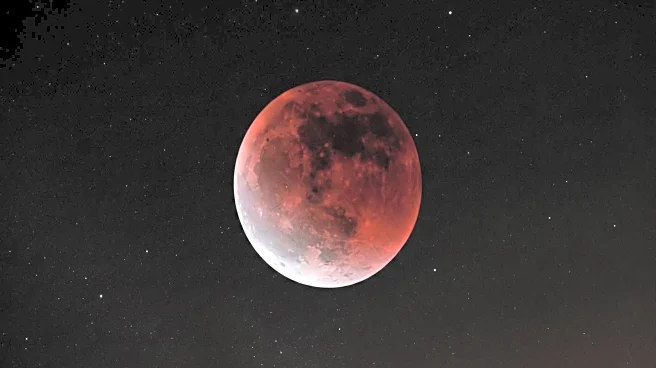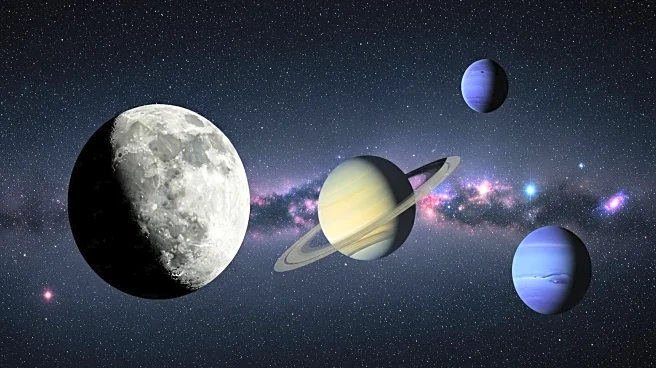What is the story about?
What's Happening?
On September 6, the planet Uranus reaches its stationary point in the constellation Taurus and begins its retrograde motion, appearing to move westward relative to the background stars. This transition marks a shift from its previous prograde motion. Uranus is observable in the early morning sky, approximately 25° above the eastern horizon by 1 A.M. local daylight time. It is located southwest of the Pleiades star cluster and can be seen with binoculars or a telescope, appearing as a bluish or grayish disk. Over the coming weeks, Uranus will approach the stars 13 and 14 Tauri, passing south of them later in the year.
Why It's Important?
The retrograde motion of Uranus is a notable event for astronomers and sky watchers, as it provides an opportunity to observe the planet's movement against the backdrop of stars. This phenomenon is part of the regular orbital dynamics of planets and offers insights into the mechanics of our solar system. Observing Uranus during this period can enhance understanding of its characteristics and behavior, contributing to broader astronomical knowledge. The event also encourages public interest in astronomy, promoting educational activities and community engagement.
What's Next?
As Uranus continues its retrograde path, observers can track its progress relative to nearby stars, providing a dynamic view of planetary motion. This period offers a chance for amateur astronomers to refine their observational skills and for educators to engage students in practical astronomy. The planet's approach to the stars 13 and 14 Tauri will be a point of interest, with its position changing over the coming months. Continued observation will allow for a deeper appreciation of the celestial mechanics at play.
AI Generated Content
Do you find this article useful?















